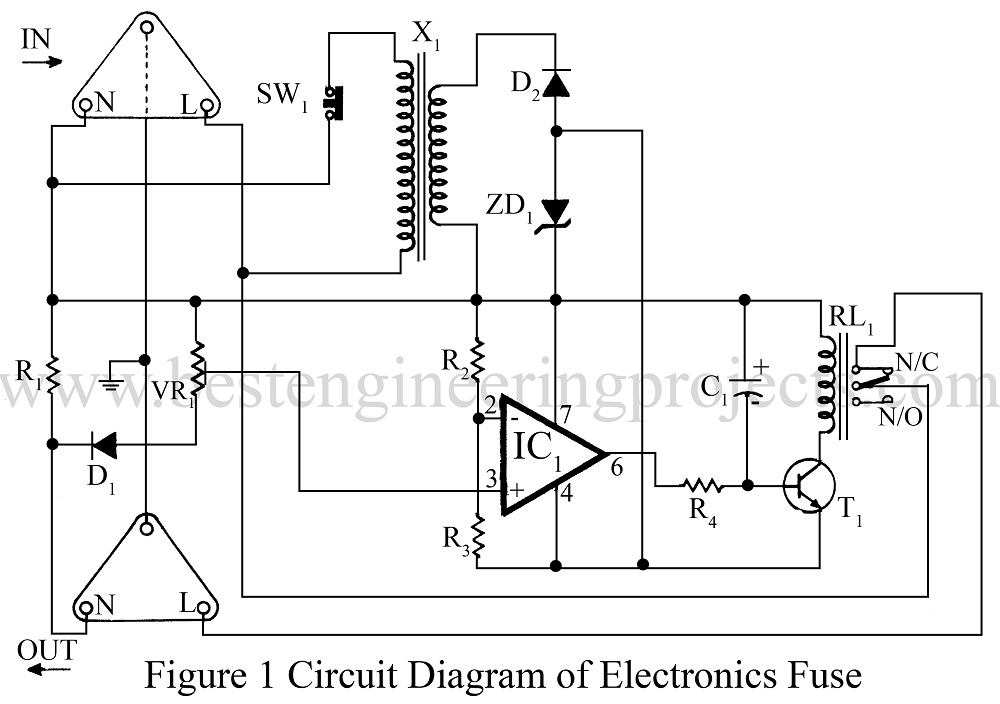Fuse protection for electronics circuits seems to be an outmoded idea, for there are circuits (in computers etc) that consume high currents initially at a lower stable value. In case high-rated fuses are employed in such equipment to accommodate the initial surge current, it defeats the very purpose of protection. Slow-blow fuses often turn out to be too slow while quick-action fuses may blow out at the mere hint of a surge.
An electronics fuse circuit of the kind described here provides an ideal solution in such cases. An electronic fuse circuit offers another advantage as replacing a fuse, in this case, is done at the mere pressing of a button.
Circuit Description and Working of Electronics Fuse Circuit | Electronic Circuit Breaker
The circuit has a ‘slow-blow’ feature. When a gadget draws more than the prescribed current, the circuit monitors it for some time, and if the situation persists it ‘blows up’ the fuse.
The circuit of the electronic fuse uses a JFET type TL081 (IC1) op-amp. A small reference voltage is set up across the IC’s inverting input, and in case the simple voltage fed across resistor R1 (in series with the load) exceeds it, the output is taken high and the relay energized to disconnect the load.
In case it is desired to latch up the relay, a twin-contact relay may be used. The other set of contacts in that case can be wired in parallel to the emitter /collector of transistor T1.

The assembled circuit of an electronic fuse can be mounted on the upper stack of the transformer, whereas the relay can be placed at the point where the switch would have been.
Check out other Fuse related circuits posted on bestengineeringprojects.com
- Electronic Fuse Using Op-amp 741
- The blown Fuse Indicator circuit
- High Current Regulator Circuit
- Load Protector Circuit and Remote Switching
PARTS LIST OF ELECTRONICS FUSE CIRCUIT
|
Resistors (all ¼-watt, ± 5% Carbon unless stated otherwise) |
|
R1 = 0.5 Ω, 10W (Wirewound) R2 = 100 Ω R3 = 10 KΩ R4 = 1 KΩ VR1 = 22 KΩ pot. |
|
Capacitor |
|
C1 = 220 µF/40V (electrolytic capacitor) |
|
Semiconductors |
|
IC1 = TL081 (JFET input operational amplifier) D1, D2 = 1N4007 (Rectifier Diode) ZD1 = 12V, 2W Zener diode T1 = BC547 (NPN Transistor) |
|
Miscellaneous |
|
RL1 = 12V, 100 mA Relay X1 = 230V AC Primary To-0-15V, 200mA SEC. Transformer SW1 = Push-To-Off Switch |